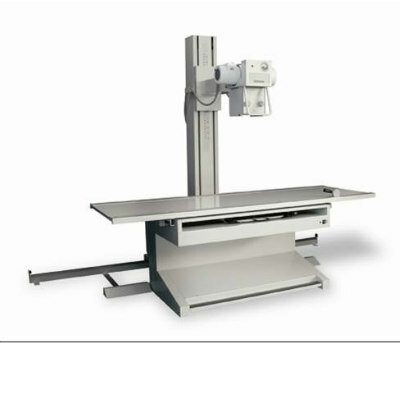AI As Good As Expert Radiologists in Diagnosing Hip Fractures from X-Rays
|
By MedImaging International staff writers Posted on 21 Mar 2023 |

Hip fractures constitute over 14% of total fractures among the elderly, yet they account for a staggering 72% of all fracture-related healthcare expenses. Predictions indicate that worldwide, the number of hip fractures will soar to 6.3 million by 2050, with associated expenses expected to reach USD 131.5 billion annually. These injuries not only introduce significant morbidity and mortality risks, but also cause a 1-year mortality rate of roughly 25% to 30%. Given these concerning statistics, there exists an urgent need for advanced technology that can enhance managing the condition, leading to better patient outcomes and economic advantages for healthcare systems. With the advent of artificial intelligence (AI), clinical diagnostic and prognostic tools for hip fractures can harness powerful predictive models, although little is known about the performance and impact of these new algorithms. Now, new study findings suggest that AI has the potential to automate hip fracture diagnosis, although overly complex and uninterpretable AI models may not yield any significant benefits when it comes to predicting patient-specific outcomes compared to the traditional, interpretable models.
Researchers at the University of Toronto (Toronto, ON, Canada) assessed the effectiveness of AI-driven algorithms in detecting hip fractures on radiographs and predicting postoperative clinical results following hip surgery. To achieve this, a systematic review and meta-analysis of 39 studies were carried out to determine the accuracy of hip fracture diagnosis by both AI models and expert healthcare professionals. The study found that AI models' diagnostic accuracy was comparable to that of expert clinicians, with similar error rates. The diagnostic precision of AI relative to expert clinicians was measured using odds ratios (ORs) with 95% CIs. Additionally, the researchers compared the area under the curves for the prediction of postoperative outcomes between traditional statistical models (e.g., multivariable linear or logistic regression) and machine learning (ML) models.
Out of the 39 studies that met the criteria, 18 (46.2%) used AI models aimed at detecting hip fractures from plain radiographs while 21 (53.8%) used AI models for predicting patient outcomes post hip surgery. In total, the studies used 39,598 plain radiographs and 714,939 hip fractures to train, validate, and test the ML models specific to the diagnosis and postoperative outcome prediction. The most commonly predicted outcomes were mortality and the length of stay in the hospital. After a pooled data analysis, ML models had a diagnostic error OR of 0.79 (95% CI, 0.48-1.31; P = .36; I2 = 60%) for hip fracture radiographs compared to clinicians. For ML models, the mean (SD) sensitivity was 89.3% (8.5%), specificity was 87.5% (9.9%), and F1 score was 0.90 (0.06). The average area under the curve for mortality prediction was 0.84 with ML models as compared to 0.79 for alternative controls (P = .09).
According to the results of this systematic review and meta-analysis, AI appears very promising for aiding the diagnosis of hip fractures using radiographs. The performance of AI models in detecting hip fractures was found to be comparable to that of expert radiologists and surgeons. Nevertheless, the current AI implementations for outcome prediction did not appear to offer significant benefits over traditional multivariable predictive statistics.
Related Links:
University of Toronto
Latest Radiography News
- Novel Breast Imaging System Proves As Effective As Mammography
- AI Assistance Improves Breast-Cancer Screening by Reducing False Positives
- AI Could Boost Clinical Adoption of Chest DDR
- 3D Mammography Almost Halves Breast Cancer Incidence between Two Screening Tests
- AI Model Predicts 5-Year Breast Cancer Risk from Mammograms
- Deep Learning Framework Detects Fractures in X-Ray Images With 99% Accuracy
- Direct AI-Based Medical X-Ray Imaging System a Paradigm-Shift from Conventional DR and CT
- Chest X-Ray AI Solution Automatically Identifies, Categorizes and Highlights Suspicious Areas
- AI Diagnoses Wrist Fractures As Well As Radiologists
- Annual Mammography Beginning At 40 Cuts Breast Cancer Mortality By 42%
- 3D Human GPS Powered By Light Paves Way for Radiation-Free Minimally-Invasive Surgery
- Novel AI Technology to Revolutionize Cancer Detection in Dense Breasts
- AI Solution Provides Radiologists with 'Second Pair' Of Eyes to Detect Breast Cancers
- AI Helps General Radiologists Achieve Specialist-Level Performance in Interpreting Mammograms
- Novel Imaging Technique Could Transform Breast Cancer Detection
- Computer Program Combines AI and Heat-Imaging Technology for Early Breast Cancer Detection
Channels
MRI
view channel
PET/MRI Improves Diagnostic Accuracy for Prostate Cancer Patients
The Prostate Imaging Reporting and Data System (PI-RADS) is a five-point scale to assess potential prostate cancer in MR images. PI-RADS category 3 which offers an unclear suggestion of clinically significant... Read more
Next Generation MR-Guided Focused Ultrasound Ushers In Future of Incisionless Neurosurgery
Essential tremor, often called familial, idiopathic, or benign tremor, leads to uncontrollable shaking that significantly affects a person’s life. When traditional medications do not alleviate symptoms,... Read more
Two-Part MRI Scan Detects Prostate Cancer More Quickly without Compromising Diagnostic Quality
Prostate cancer ranks as the most prevalent cancer among men. Over the last decade, the introduction of MRI scans has significantly transformed the diagnosis process, marking the most substantial advancement... Read moreUltrasound
view channel
Deep Learning Advances Super-Resolution Ultrasound Imaging
Ultrasound localization microscopy (ULM) is an advanced imaging technique that offers high-resolution visualization of microvascular structures. It employs microbubbles, FDA-approved contrast agents, injected... Read more
Novel Ultrasound-Launched Targeted Nanoparticle Eliminates Biofilm and Bacterial Infection
Biofilms, formed by bacteria aggregating into dense communities for protection against harsh environmental conditions, are a significant contributor to various infectious diseases. Biofilms frequently... Read moreNuclear Medicine
view channel
New SPECT/CT Technique Could Change Imaging Practices and Increase Patient Access
The development of lead-212 (212Pb)-PSMA–based targeted alpha therapy (TAT) is garnering significant interest in treating patients with metastatic castration-resistant prostate cancer. The imaging of 212Pb,... Read moreNew Radiotheranostic System Detects and Treats Ovarian Cancer Noninvasively
Ovarian cancer is the most lethal gynecological cancer, with less than a 30% five-year survival rate for those diagnosed in late stages. Despite surgery and platinum-based chemotherapy being the standard... Read more
AI System Automatically and Reliably Detects Cardiac Amyloidosis Using Scintigraphy Imaging
Cardiac amyloidosis, a condition characterized by the buildup of abnormal protein deposits (amyloids) in the heart muscle, severely affects heart function and can lead to heart failure or death without... Read moreGeneral/Advanced Imaging
view channel
New AI Method Captures Uncertainty in Medical Images
In the field of biomedicine, segmentation is the process of annotating pixels from an important structure in medical images, such as organs or cells. Artificial Intelligence (AI) models are utilized to... Read more.jpg)
CT Coronary Angiography Reduces Need for Invasive Tests to Diagnose Coronary Artery Disease
Coronary artery disease (CAD), one of the leading causes of death worldwide, involves the narrowing of coronary arteries due to atherosclerosis, resulting in insufficient blood flow to the heart muscle.... Read more
Novel Blood Test Could Reduce Need for PET Imaging of Patients with Alzheimer’s
Alzheimer's disease (AD), a condition marked by cognitive decline and the presence of beta-amyloid (Aβ) plaques and neurofibrillary tangles in the brain, poses diagnostic challenges. Amyloid positron emission... Read more.jpg)
CT-Based Deep Learning Algorithm Accurately Differentiates Benign From Malignant Vertebral Fractures
The rise in the aging population is expected to result in a corresponding increase in the prevalence of vertebral fractures which can cause back pain or neurologic compromise, leading to impaired function... Read moreImaging IT
view channel
New Google Cloud Medical Imaging Suite Makes Imaging Healthcare Data More Accessible
Medical imaging is a critical tool used to diagnose patients, and there are billions of medical images scanned globally each year. Imaging data accounts for about 90% of all healthcare data1 and, until... Read more
Global AI in Medical Diagnostics Market to Be Driven by Demand for Image Recognition in Radiology
The global artificial intelligence (AI) in medical diagnostics market is expanding with early disease detection being one of its key applications and image recognition becoming a compelling consumer proposition... Read moreIndustry News
view channel
Bayer and Google Partner on New AI Product for Radiologists
Medical imaging data comprises around 90% of all healthcare data, and it is a highly complex and rich clinical data modality and serves as a vital tool for diagnosing patients. Each year, billions of medical... Read more



















